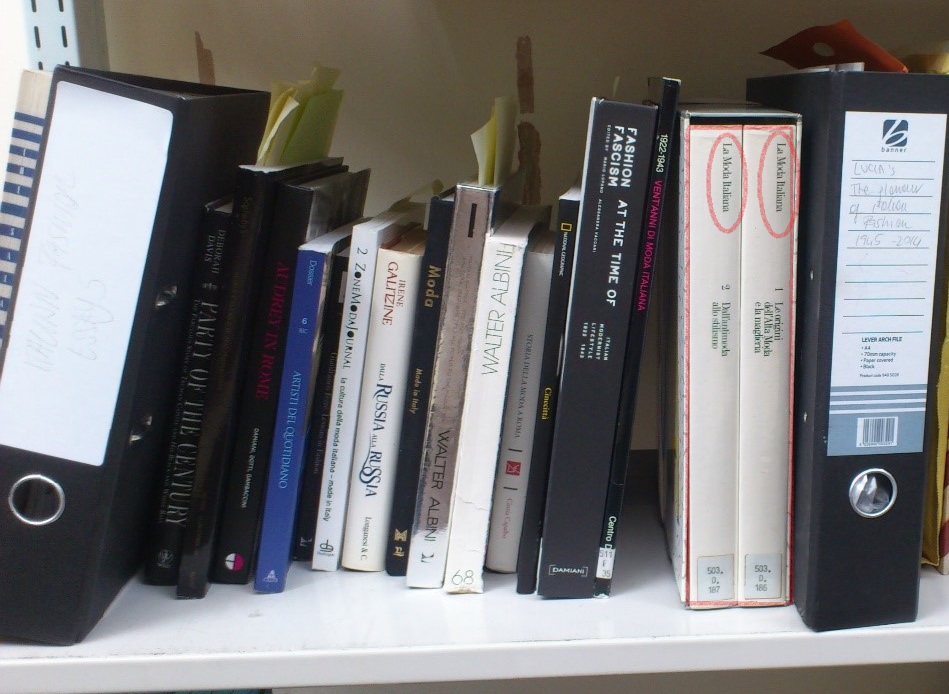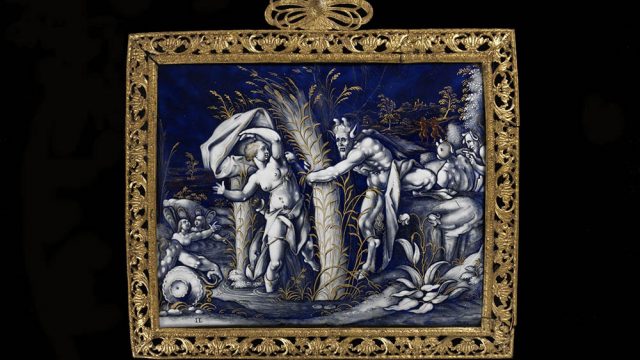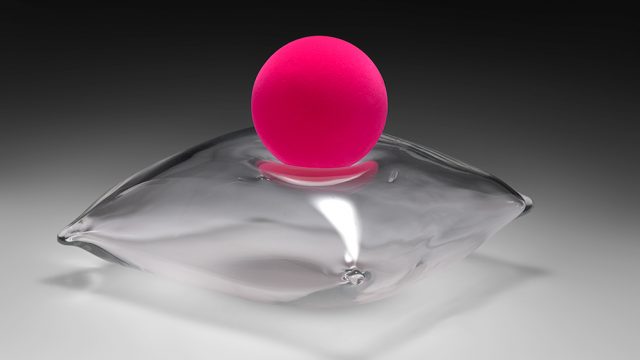
Part of my job here at the V&A’s research department, besides working as a research assistant on the exhibitions “The Glamour of Italian Fashion 1945-2014” and “Shoes: pleasure and pain”; is to promote and undertake new research as well as to engage with audiences and colleagues from across the world. One of the ways of doing this is to participate in conferences in the UK and abroad.
Last June I was asked to present a paper at the conference: ‘MODA ARTE STORIA SOCIETA’. Omaggio a Grazietta Butazzi’ at the Fondazione Antonio Ratti in Como, Italy. This conference was organised to commemorate the recent passing of the Italian Fashion historian Grazietta Butazzi (1925-2013).
For over 40 years Butazzi dedicated her research to the history of costume with a focus on the interwoven relationship between fashion, society, culture, power and women’s lives. Her approach to these subjects contributed towards the formation of a generation of scholars, researchers and academics and created the basis for an “Italian School” of fashion studies. The programme of the conference was very dense and of very high caliber bringing together historians, scholars, disciples, collectors, fashion and textile specialists from all over Italy and the world .
In the context of the day I was asked to present a paper that drew a comparison between the methodologies and approaches used by Butazzi for the seminal publication La Moda Italiana and the V&A book and exhibition The Glamour of Italian Fashion 1945-2014
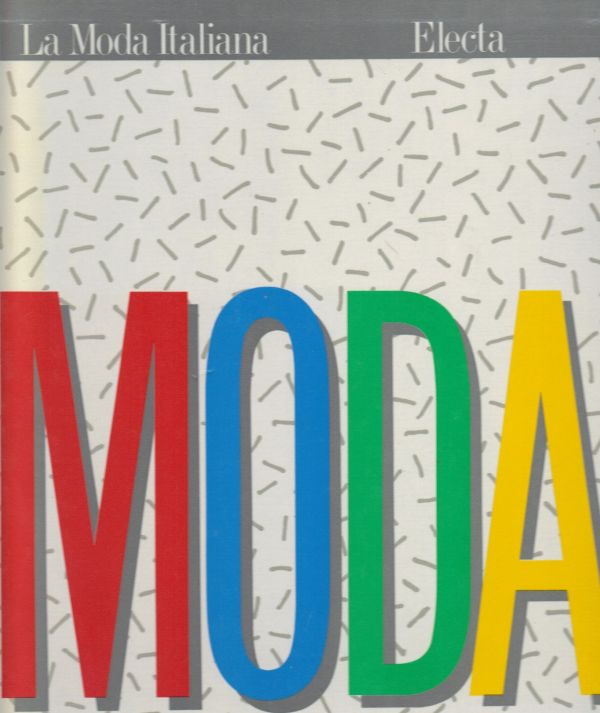

During the two- years of intense research before the exhibition opening, Butazzi’s double publication La Moda Italiana has been a companion and a constant reference for my research. The two volumes are still sitting proudly on my shelves.
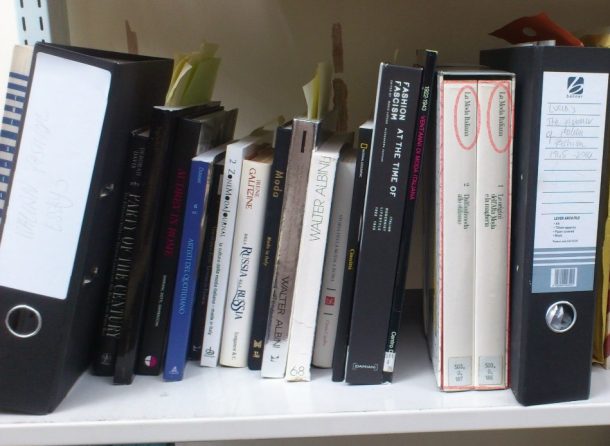
These volumes were published in Milan respectively in 1985 and 1986 and edited by Grazietta Butazzi together with Gloria Bianchino, Alessandra Mottola Molfino and Arturo Carlo Quintavalle. The period of the early 1980s in Milan was characterized by the common efforts of a group of scholars towards building a fashion museum in Milan. In this climate of excitement and debate, these books were published almost as it seemed at the time as an auspice of the birth of a new museum (unfortunately, this did not happen).
The publication was planned with a double intent: on one side an historical approach that could provide answers to complex problems that the Italian Fashion system had to face from the previous decades and on the other side to promote the Milanese museological idea. The V&A’s The Glamour of Italian Fashion since 1945 book was planned to accompany and develop subjects introduced in the exhibition and functions as an independent book even for a reader that hasn’t seen the exhibition.
When I started to compare these two editorial ideas the differences in terms of historical and geographical context (ITALY in the 1980s and the UK in the mid 2000s) and type of readers jumped out prominently. Quite soon, however, I started to notice a common approach: both projects shared a similar view based on an object-based investigation.
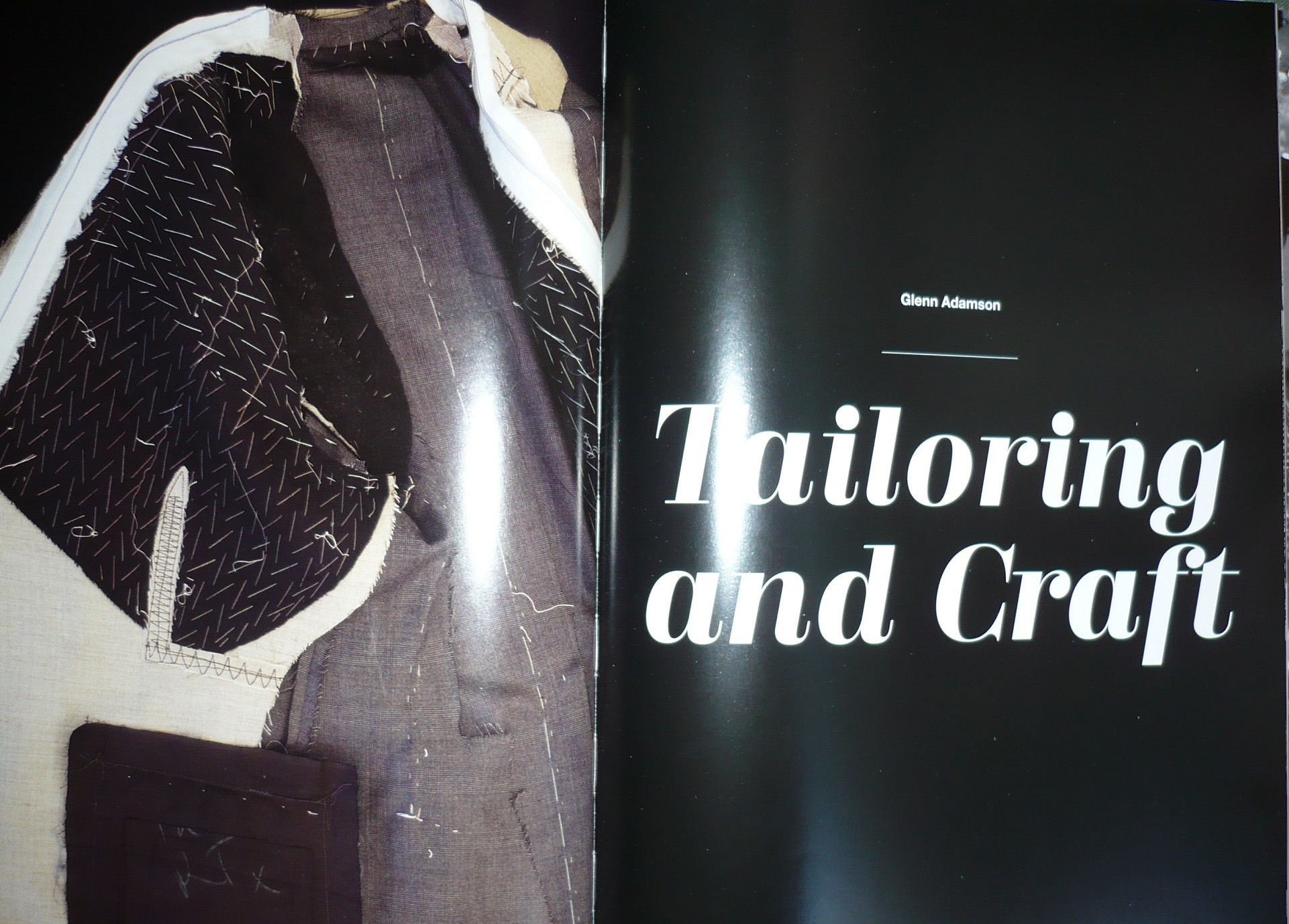

Even though almost 30 years had passed between them, both these publications were created in an environment in which objects are carefully measured, analysed and catalogued in order to preserve them in the best conditions to be used and studied by future generations.
